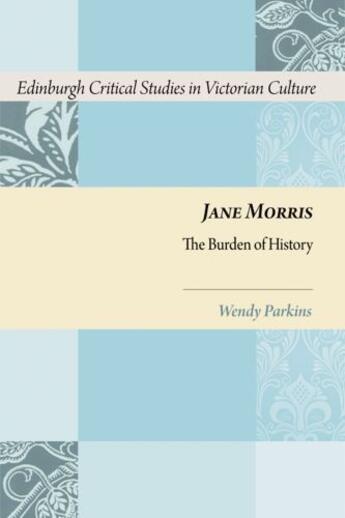Des idées de lecture pour ce début d'année !
Passionné(e) de lecture ? Inscrivez-vous
gratuitement ou connectez-vous pour rejoindre la
communauté et bénéficier de toutes les fonctionnalités du site !

A scholarly monograph devoted to Jane Morris, an icon of Victorian art whose face continues to grace a range of Pre-Raphaelite merchandise. Described by Henry James as a 'dark, silent, medieval woman', Jane Burden Morris has tended to remain a rather one-dimensional figure in subsequent accounts. This book, however, challenges the stereotype of Jane Morris as silent model, reclusive invalid, and unfaithful wife. Drawing on extensive archival research as well as the biographical and literary tradition surrounding William Morris and Dante Gabriel Rossetti, the book argues that Jane Morris is a figure who complicates current understandings of Victorian female subjectivity because she does not fit neatly into Victorian categories of feminine identity. She was a working-class woman who married into middle-class affluence, an artist's model who became an accomplished embroiderer and designer, and an apparently reclusive, silent invalid who was the lover of Dante Gabriel Rossetti and Wilfred Scawen Blunt. Jane Morris and the Burden of History particularly focuses on textual representations - in letters, diaries, memoirs and novels - from the Victorian period onwards, in order to investigate the cultural transmission and resilience of the stereotype of Jane Morris. Drawing on recent reconceptualisations of gender, auto/biography, and afterlives, this book urges readers to think differently - about an extraordinary woman and about life-writing in the Victorian period.
Il n'y a pas encore de discussion sur ce livre
Soyez le premier à en lancer une !

Des idées de lecture pour ce début d'année !

Si certaines sont impressionnantes et effrayantes, d'autres sont drôles et rassurantes !

A gagner : la BD jeunesse adaptée du classique de Mary Shelley !

Caraïbes, 1492. "Ce sont ceux qui ont posé le pied sur ces terres qui ont amené la barbarie, la torture, la cruauté, la destruction des lieux, la mort..."